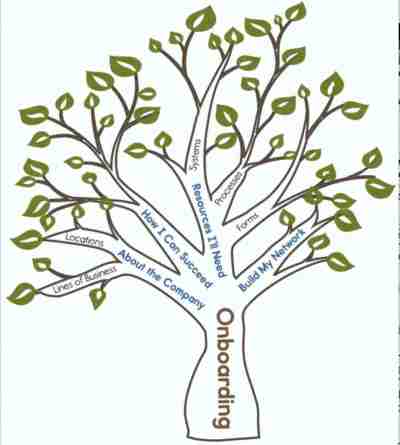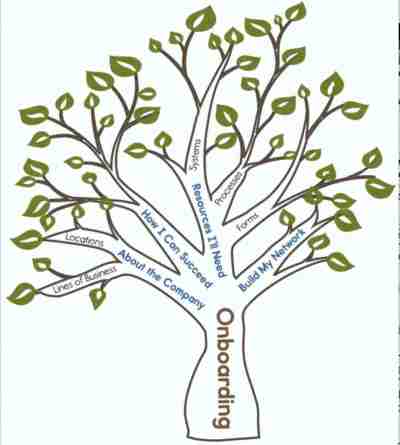This post was originally published on this site
On a recent weekend, I caught up on my regular Sisyphean chore: raking leaves that blow into my yard from my neighbor’s three large oak trees. I refer to these trees as the “gifts that keep on giving” because they start losing their leaves in October and continue until spring. As much as I appreciate these trees, I could do with fewer leaves.
I see a parallel in today’s digital learning offerings. In recent years, there’s been a faddish fixation with microlearning, and it’s gotten a bit extreme. Somehow, microlearning has become the answer to too many performance questions. Organizations are providing scads of disjointed content from catalogs, aggregators, “smart” artificial intelligence (AI) recommendation engines, and the like that too often are disconnected from a learner’s work context. Like the leaves in my yard, learners have to slog their way through way too much extraneous content.
Don’t get me wrong: Learning can be very effective when it is short-form, chunked, and delivered to learners at the right moment of need. Short-form content—such as video, podcasts, documents, and more—is ubiquitous and easy to access and consume.
But microlearning is a means, not an end to itself. To be effective, microlearning needs to be part of a thoughtful, personalized plan to acquire important knowledge and develop key skills. Like leaves without a tree, microlearning content that doesn’t tie back to a learner’s context won’t stick and amounts to so many leaves blowing in the wind.
Binge Watching vs. Skill Building
I often hear Learning and Development (L&D) professionals talk about what they think modern learning is, and it often sounds like this:
- Microlearning in short chunks, available just in time
- Recommending content that’s popular among peers and aligned to a learner’s interests
- Making it easy to find content learners might like
Sounds a lot like Netflix, doesn’t it? I love my Netflix as much as the next person, and I’ve discovered amazing shows thanks to its recommendations (Mad Men, anyone?). But Netflix serves to entertain me, and suggesting the next thing for me to binge watch is fundamentally different than guiding me along a thoughtfully curated learning path that helps me build a new skill or acquire critical knowledge.
If I am truly learning, I need to do much more than just consume content. Too often, Learning professionals focus on learning as a content challenge and obsess over novel ways to slice and dice content. However interesting this may be to the instructional designer, this effort can come at the expense of what learners really want and need, which is building skills by practicing and applying new concepts to my particular situation. With a focus on work context, learners apply learning to their jobs. Without it, well, it’s just making real skill building and change that much harder to accomplish.
We encourage our clients to start by building what could be termed a “Tree of Knowledge”: the trunk and the branches on which the content hangs. Here’s how a tree of knowledge could be drawn for an onboarding program.

The leaves are deciduous—details that might regularly change, such as procedures, regulations, products, experts, and leaders—but the trunk and branches are the context and the principles which, even though they’ll get pruned from time to time, stay pretty much the same.
Context is all important. Without it, making sense of microlearning’s leaves is a confusing task for learners, and one they’re not necessarily going to be motivated to complete. It’s easy to learn tidbits, and, of course, we are conditioned to browse and consume short-form media—that’s one reason microlearning has such mindshare. But we can’t rely on time-starved learners to make sense of a deluge of microlearning. Sequencing learning chunks into a behavior-changing, business-impacting flow is where Learning professionals add significant value. And by creating thoughtfully curated learning paths, Learning professionals can rely on learners to be curious, and explore leaf to leaf as an entire tree of knowledge unfolds for them.
Microlearning is a tool, not a solution. So go ahead and make your content micro, because it can be an effective approach to modern learning. But please don’t dump those leaves on learners without first providing them a coherent trunk and branches.
Sam Herring is vice president and General Manager of Intrepid by VitalSource. He leads the VitalSource business for the corporate and professional markets. Intrepid by VitalSource’s products include Intrepid Learn, which enables organizations to solve their critical business challenges through a learning platform that scales massively and deeply engages learners, and Intrepid Discover, a ecure content delivery platform for the extended enterprise. Herring has been a leader in the learning industry for nearly 20 years. Prior to joining VitalSource, he was CEO and co-founder of Intrepid Learning Solutions, a learning consulting and outsourcing company that was acquired by Xerox in 2015, and the CEO of Intrepid Learning, Inc., the learning technology business acquired by VitalSource in 2017. He is a graduate of Yale University with a concentration in History, and Harvard University where he earned a Master of Divinity. For more information, visit: https://www.intrepidlearning.com

